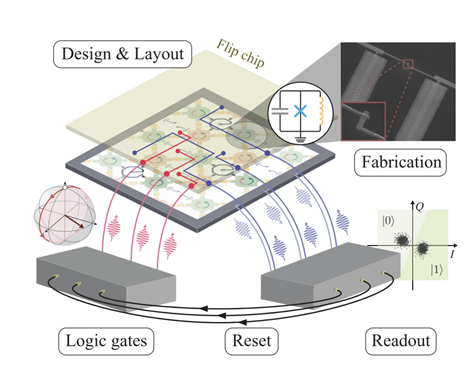Artificial Atoms Power a Novel Quantum Processor Architecture
Fluxonium qubits can build cutting-edge quantum devices that will harness the potential of quantum computing.

The Science
The next generation of quantum computers requires processors built with superior qubits – the building blocks of quantum devices. Researchers developed a blueprint for a novel processor based on an “artificial atom” called a fluxonium qubit. These are superconducting electronic circuits that store information in energy levels, similar to natural atoms, and outperform many other types of qubits due to their highly controllable properties.The Impact
The blueprint in this study pioneered a systematic study of fluxonium qubits that can be engineered to have high fidelity. This ability is vital for fabricating high-performance quantum devices. The researchers focused on the scalability and adaptability of the processor’s main components. This will help to improve the performance of quantum circuits. They also offered practical suggestions on how to adapt and build the cutting-edge hardware for superconducting devices.Summary
The fluxonium circuit presented in the research consists of three elements: a capacitor, a Josephson Junction, and a superinductor, which helps suppress magnetic flux noise. Flux noise is a typical source of unwanted interference that affects superconducting qubits and causes decoherence. Researchers at Lawrence Berkeley National Laboratory, the University of California, Berkeley, and Yale University simulated two types of programmable logic gates in the quantum device based on fluxonium qubits to validate the performance of the proposed blueprint. The researchers hope that continued research and development on fluxonium and superconducting qubit alternatives will bring about the next generation of devices for quantum information processing.Contact
Long B. NguyenLawrence Berkeley National Laboratory
LBNguyen@lbl.gov
Funding
This work is supported by the Department of Energy Office of Science, Office of Advanced Scientific Computing Research, Testbeds for Science program. The numerical simulation was done using the Quantum Toolbox in Python (QuTiP) software package.Publications
Nguyen, L. B., et al., Blueprint for a High-Performance Fluxonium Quantum Processor. PRX Quantum 3, 037001 (2022). [DOI: 10.1103/PRXQuantum.3.037001]Related Links
Innovating Quantum Computers with Fluxonium Processors, Advanced Quantum Testbed News from Lawrence Berkeley National LaboratoryHighlight Categories
Program: ASCR
Performer: University , DOE Laboratory



